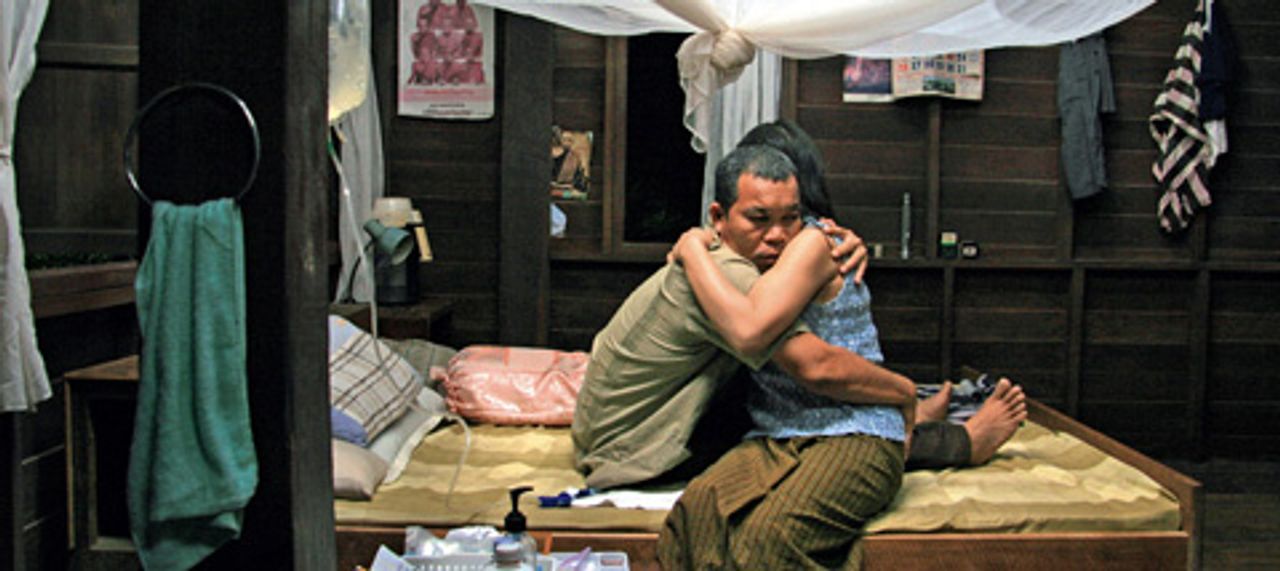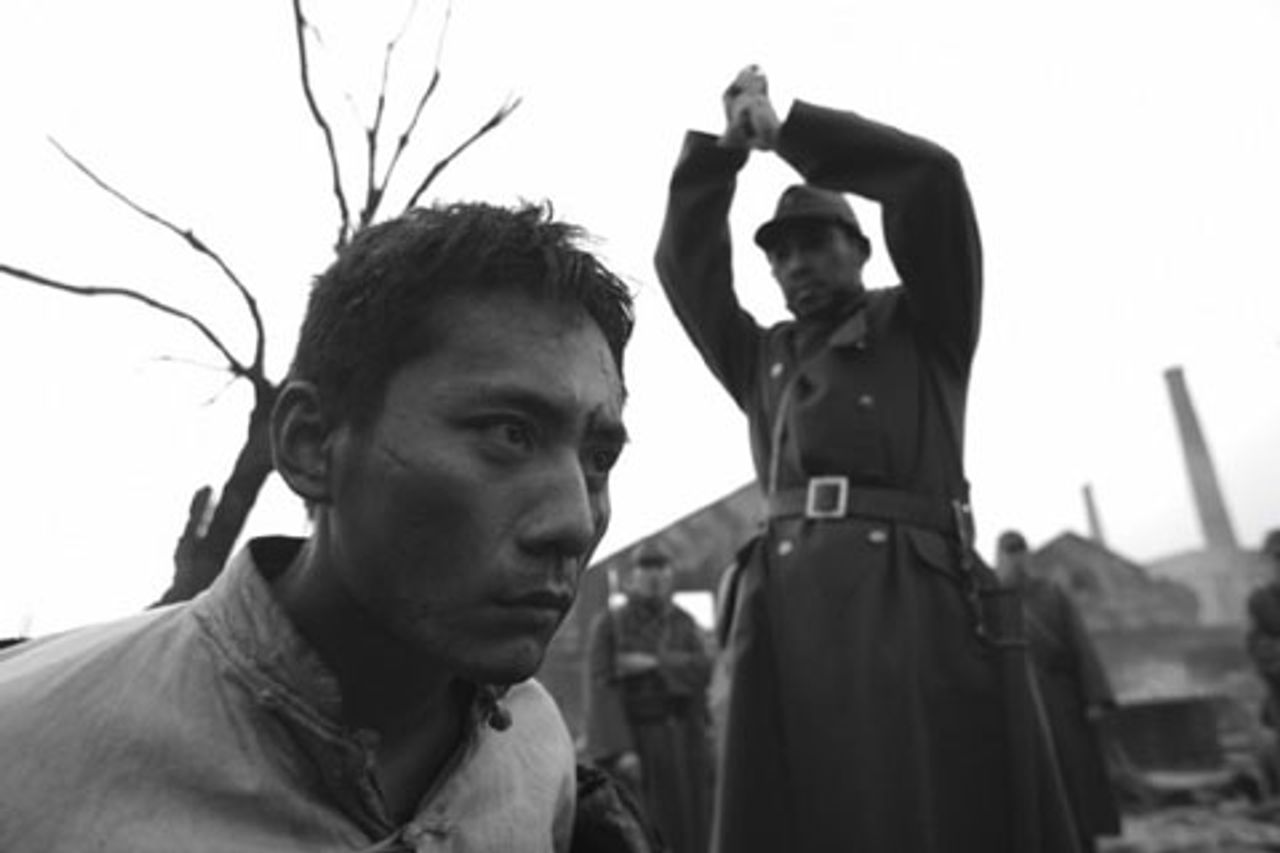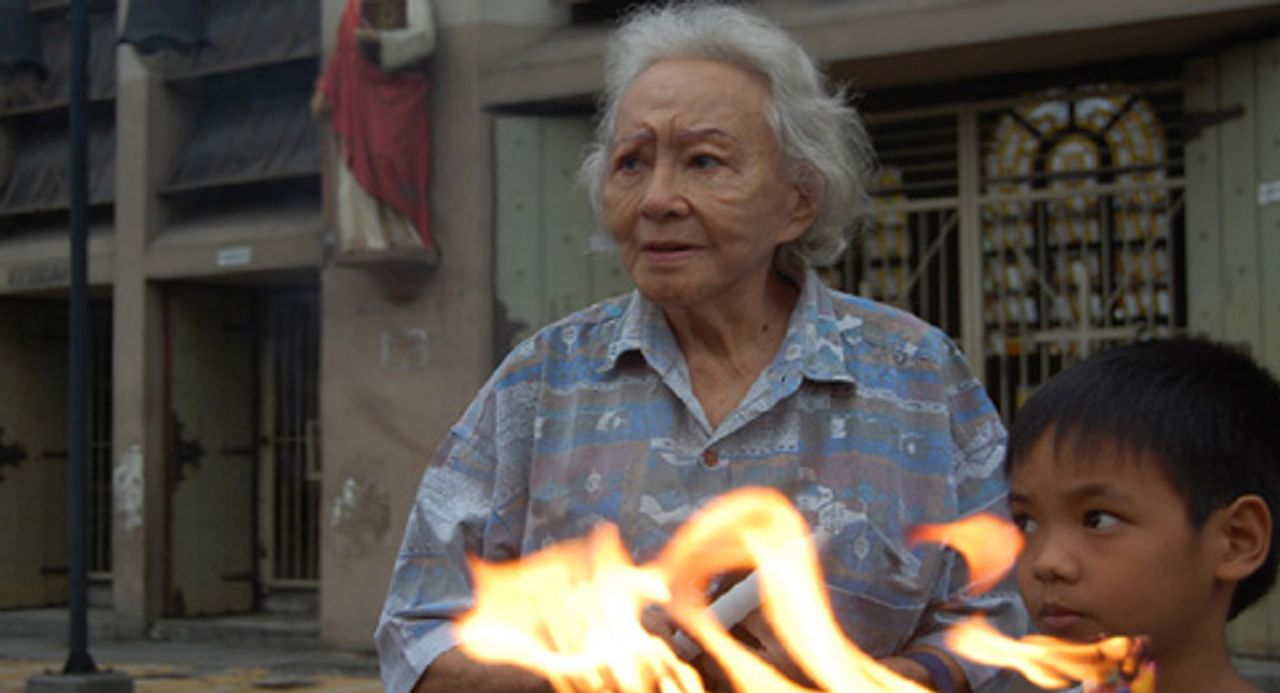This is the third in a series of articles on the 57th Sydney Film Festival. See: Parts 1 and 2.
A disparate group of features from Asia, some of them dealing with important historical or social questions, were screened at this year’s Sydney festival. Those seen by this writer included Uncle Boonmee Who Can Recall His Past Lives—this year’s Cannes best picture prize-winner by Apichatpong Weerasethakul; Lola from the Philippines by Brillante Mendoza; and City of Life and Death by Lu Chuan, about the 1937 Nanjing massacre.
Others presented were Sri Lankan director Vimukthi Jayasundara’s Between Two Worlds—a visual poem about the persecution of Tamils, and The Prince of Tears, a historical drama set in Taiwan by director Yonfan. These interesting but inconsistent works have already been reviewed by the WSWS (see: “More human (and artistic) problems”).
An enigmatic work from north-east Thailand
Uncle Boonmee Who Can Recall His Past Lives by Thai director Apichatpong Weerasethakul is an unusual film about a man dying of kidney failure who has returned to spend his last days with his sister-in-law in Nabua, a village near the Laotian border in north-east Thailand. He wants to visit the nearby jungles that he played in as a child and where he hopes to die.
 Uncle Boonmee Who Can Recall His Past Lives
Uncle Boonmee Who Can Recall His Past LivesWeerasethakul’s film has its charms, as long as viewers are prepared to accept its slow pace, non-linear structure and the visitations of various ghosts and animal spirits—some of the past lives that Uncle Boonmee (Thanapat Saisaymar) recalls before his death. The film has a companion 17-minute short—A letter to Uncle Boonmee—and a video instillation, Phantoms of Nabua, that unfortunately were not shown in Sydney.
It’s difficult to recount all that happens in Weerasethakul’s gently dreamlike and at times whimsical film but it begins with Uncle Boomee’s arrival in the village.
During his first evening meal with Jen, his sister-in-law, and Tong, his son, Boonmee is visited by the ghost of his wife Huay, and Boonsong, another son. Boonsong, who mysteriously disappeared some time ago, has been reincarnated as a red-eyed monkey ghost, one of many who, according to the movie, inhabit the nearby forests.
The story unfolds as an eclectic mixture of interweaving—realistic and supernatural—sequences. There is Boonmee’s rather mundane daily routine—medical treatment, tending to his honey bees and light-hearted conversations with local Laotian immigrant labourers—along with his trips to the nearby forest, which at night is populated with various spirits. Boonmee has discussions with his ghostly wife, asking her advice on how he should prepare for his afterlife. “Heaven’s not all that it’s cracked up to be,” she warns.
There are also scenes involving a talking catfish with erotic powers and an ancient princess, along with reconstructed news reports and photographs about the assassination of monkey ghosts by the Thai military. The latter is a reference to bloody repression of Communist Party supporters throughout Thailand’s north and north-east during the 1970s. Boonmee, who had been a Thai soldier, believes that his illness is a result of bad karma created by his participation in the anti-communist crackdown.
Jen, Boonmee’s sister-in-law, attempts to dismiss his concerns about his bad karma, declaring: “You killed commies for the nation.”
He replies: “For the nation? Whatever. What a pain in the ass.” Boonmee’s son responds: “Father was sent to hunt people in the jungle.”
In a later comment Boonmee says: “I was sent to a place by an authority that could make anybody disappear.”
These brief but interesting exchanges are rather cryptic, particularly for those who know nothing about Thai history. They do, however, point to a dark period that Thai writers, artists and filmmakers have largely ignored or been prevented from exploring by government censors.
Asked by the Hollywood Reporter in May whether there was any link between this aspect of his movie and the recent bloody government repression of the United Front for Democracy Against Dictatorship, or Red Shirt, protests in Bangkok, Weerasethakul replied:
“Not directly. What’s happened in Bangkok now is a class war. In Thailand, there are such distinct classes. People are always being oppressed, either economically or socially, and it was the same thing during the 60s with the farmers who were trying to have their voices heard. There’s been neglect. During that time, with the communism from Laos and Vietnam, it was bound to happen that they turned to these ideas….
“This is one of the biggest clashes of class, focused on the underprivileged. Before, it was more a clash between the army and the middle class, but now it’s about the poor. At the same time, it’s a different kind of war, because there’s the Internet and many new tactics come into play. More than ever, you can see clearly just how Thailand is really shaped by the media and how the place has become a propaganda machine. But before long, people will start to notice when their web sites disappear.”
Weerasethakul, who trained as an architect in Thailand and then a visual artist in Chicago, also told the press that Uncle Boonmee was a tribute to the local myths he learnt growing up in Thailand’s north-east and a parable on Thai cinema which he felt was “dying or dead”.
Problems in Thai cinema, he added, could not be blamed on Thai filmmakers. “They cannot do anything because of these censorship laws.”
Under Thai censorship laws, the state can cut, pixelise or ban outright movies that it considers could “undermine or disrupt social order and moral decency, or that might impact national security or the pride of the nation”. Thailand’s chief of police is a permanent member of the censorship board.
While it is not clear what direction Weerasethakul’s future artistic work will take, his work is innovative, intelligent and, notwithstanding its elliptical characters, touches on issues that have been declared taboo by the Thai establishment (see: “‘New Crowned Hope” films from Asia: Strengths and weaknesses” for a review of Weerasethakul’s Syndromes and Centuries [2006]).
Japanese war crime
City of Life and Death, a 135-minute widescreen feature by Chinese director Lu Chuan, dramatises the Nanjing massacre by Japanese occupying forces in 1937 and its aftermath. The bloodletting began in December 1937 when Japanese troops defeated the Chinese forces defending the city and unleashed a systematic campaign of looting, murder and rape. Approximately 300,000 residents—men, women and children—were killed and an estimated 20,000 women raped.
Commonly known as the Rape of Nanjing, the mass murder—one of the worst atrocities of the twentieth century—continued for months until March 1938. Foreign witnesses reported mounds of decapitated and charred bodies and other unprecedented acts of savagery. In one incident an American journalist saw Japanese troops gun down over 200 men in 10 minutes.
 City of Life and Death
City of Life and DeathThe City of Life and Death, which was seen by over three million people within weeks of its 2009 release in China, took four years to produce and is a multi-million dollar studio effort involving the China Film Group Corporation, Stellar Megamedia, Media Asia Films and Jiangsu Broadcasting System.
Lu Chuan is promoted in the Chinese media as major new director but these appraisals are largely based on ticket sales. His first two features—The Missing Gun (2001), a joint China Film Group Corporation/Columbia TriStar comedy about a police officer who loses his gun, and Mountain Patrol (2004), about a volunteer patrol group which risks its life protecting the endangered Tibetan antelope from poachers—were major box office successes.
The City of Life and Death is shot in black and white with extensive use of hand-held cameras and other methods aimed at giving it a low-budget, semi-documentary feel. Notwithstanding these techniques, the movie flounders and ultimately fails because it pays too little attention to character development and approaches the terrible war crimes committed in Nanjing as a series of horrifying spectacles.
The movie begins after the defeated Kuomintang forces have largely evacuated the city and Japanese troops are engaged in sporadic skirmishes with the remaining Chinese troops in the city. It then proceeds via a series of dramatised episodes, each one introduced with visual postcards from eye-witnesses. The postcard texts are frustratingly unhelpful because they briefly appear and are difficult to read.
Without minimising the problems involved in trying to dramatise the tragedy of the Nanjing massacre, the movie overloads the viewer with almost mind-numbing examples of the mass horror; repeatedly settling for epic scenes involving thousands of extras and frightening examples of the savagery. No attempt is made to provide audiences with any understanding of why this crime by Japanese imperialism was committed or its connection to the bloody conflagration that would erupt a few years later in World War II.
Central characters in The City of Life and Death include Lu Jianxiong (Ye Liu), a heroic Chinese soldier, and a child resistance fighter Xiaodouzi (Bin Liu), Nazi businessman John Rabe (John Paisley), who helped save several thousand Chinese civilians, and his secretary Mr Tang (Wei Fan), as well as a missionary schoolteacher and a prostitute.
Lu Chuan attempts to avoid demonising all the Japanese characters but these efforts are perfunctory. For example, Kadokawa (Hideo Nakaizumi), a lower-ranked Japanese soldier with a fairly substantial place in the story, isn’t a caricature but he is portrayed as a bumbling figure.
While these characters are not as crudely stylistic as those in the countless socialist realist dramas churned out by Mao’s regime in the 1950s, 60s and 70s, they’re not all that far from it. The lingering influence of the false and artistically debilitating socialist realism and the ever-present political pressure exerted on filmmakers by the Beijing bureaucratic regime cannot be underestimated.
Two Filipino grandmothers
Philippine director Brillante Mendoza’s latest feature is called Lola—the Tagalog word for grandmother. The drama is set in Manila’s riverside slums and examines the plight of two poverty-stricken elderly women attempting to overcome the consequences of a murder.
 Lola
LolaThe grandson of the first woman we meet in this 110-minute feature has been killed in a street robbery for his cell-phone; the grandson of the other woman is the perpetrator of the crime. Mendoza’s movie documents the tremendous difficulties the elderly women face trying to deal with this tragedy.
Dealing with the vicissitudes of everyday is difficult enough for the two women; fighting to overcome the financial difficulties produced by the crime requires almost superhuman strength. Almost against their wills, the two grandmothers are drawn together by their social circumstances and reach an out of court settlement that pays for the funeral of one grandson and secures the jail release of the other.
Lola is not a complex story and for much of the film it almost feels like a documentary, with little or no change in its emotional tone. It is, however, a compassionate work with intelligent performances by Anita Linda as the bereaved grandmother and Rustica Carpio as the grandmother whose grandson is jailed. Lola contains several striking images. A brief scene, showing hundreds of young men incarcerated in appallingly overcrowded cells, is nightmarish.
Mendoza, who previously worked as an art director and in Philippine television and advertising, has produced nine feature films since The Masseur, his directorial debut in 2005. This is a prodigious output and one that has probably taken its toll. The maxim “less is more” probably applies here and would allow for the development of more complex narrative and dramatic intensity.
Although Lola is stylistically prosaic and the plot unfolds more slowly than is necessary, it does provide a detailed picture of the circumstances confronting Manila’s poor, where crimes are overwhelmingly the product of the desperation and despair produced by generations of unemployment and poverty.
Mendoza spoke with the World Socialist Web Site during the Sydney Film Festival and elaborated on the film and his stylistic approach (see: “Brillante Mendoza discusses Lola”).
To be continued
